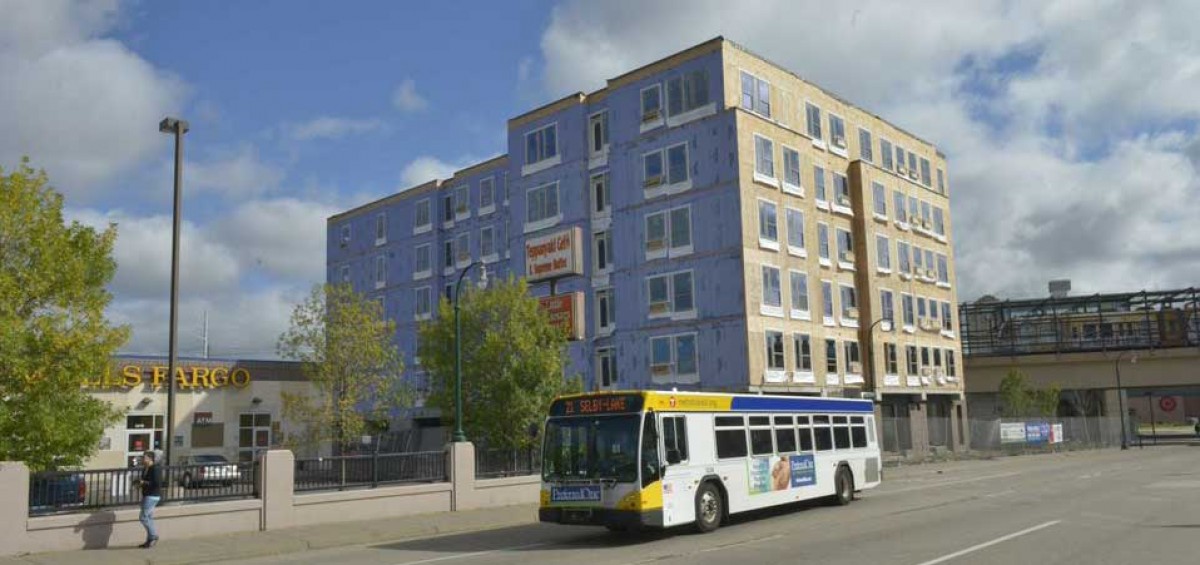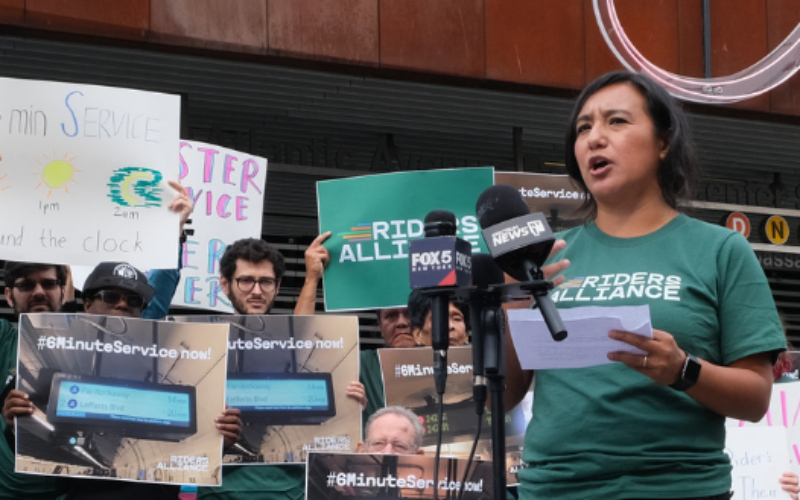
Our latest Ridership Initiative guest post comes to us from Eleni Bardaka, an Assistant Professor at North Carolina State University, and John Hersey, a senior TOD associate at Denver’s RTD. The coauthors have led survey research exploring the travel habits of people in different types of housing in transit-oriented development. Consistent with TransitCenter’s recent coverage of transit-oriented affordable housing policies in Seattle and Los Angeles, Bardaka and Hersey’s work confirms that low-income housing residents use transit a lot more than market-rate residents, reinforcing the case for affordability in transit-oriented developments.
If you, your research group, or your transit agency would like to share your story or hear from someone else about a particular topic, let us know by emailing [email protected]
Transit systems provide users with a ladder to economic opportunity, connecting individuals to home, work, education, healthcare, and myriad metropolitan destinations. This ladder is most critical to low-income, transit-reliant households with little means to afford auto-oriented lifestyles.
Public and private sector stakeholders increasingly agree on the value of effective transit. For example, in 2004 Metro Denver voters approved a sales-tax increase to implement FasTracks, a transit-expansion program led by the region’s transit agency, RTD, that would extend 122 miles of rail, introduce 18 miles of bus rapid transit, and create 55 transit stations in order to enhance multimodal mobility in the eight-county region. Real estate developers have followed that public investment, capturing financial gains from newly increased property values in gentrifying station areas; Economic and Planning Systems estimates that 29 percent of all Metro Denver apartments either proposed or under construction in spring 2017 were sited within a half-mile of a rail station, attracting residents to new, relatively expensive housing developments.
Therein lies the rub. Without equitable planning and policies in place, major transit investment can generate new demand for development in areas that quickly transition from economic afterthoughts to high-end enclaves of housing, retail, and offices catering to higher-income earners while leaving behind low-income households who could most benefit from improved transit access. Transit agencies may then find themselves the victims of their own expansion, setting in motion a speculative real estate market that delivers high-rent land uses but few new transit riders.
Equitable Transit-Oriented Development to the Rescue?
Equitable transit-oriented development (eTOD) offers one solution to this investment-revenue disconnect by integrating income-restricted housing into station-area developments that are otherwise likely to attract market-rate housing.
Gentrification’s impact on low-income households’ fragile socio-economic fabric is well documented, but its impact on transit agencies is less understood. To better understand the development factors that affect transit ridership, in May 2017 North Carolina State University and RTD surveyed 2,418 mixed-income households living in 44 multifamily apartments within a 10-minute walk of nine RTD rail stations in Denver. Based on 314 responses, we found the following relationships between transit ridership, resident age, employment status, and household income among market-rate and low-income residents:
- Market-rate (MR) residents are younger than their low-income (LI) counterparts: 83 percent of MR residents are between 25 and 44 years old, compared to 23 percent of LI residents in the same age range. The elderly comprise two percent of MR residents and 21 percent of LI residents.
- Asked about travel mode choice over the past 30 days, 69 percent of MR residents most frequently use personal-vehicle, while 66 percent of LI residents most frequently use transit.
- In spite of the station areas’ unique transportation asset, rail commute shares are third-highest for respondents from both income groups living near rail stations, highlighting the region’s comparatively robust bus coverage in serving low-income employment opportunities.
- For respondents whose employer provides a transit pass, MR and LI residents commute by transit at wildly different rates: 28 percent and 92 percent, respectively.
- 91 percent of MR residents own at least one vehicle, while only 47 percent of LI residents do.
A fiscally minded transit agency may wish to dictate joint development that will benefit long-term farebox revenue. These survey findings suggest that transit ridership overall—and bus ridership in particular—is significantly higher among residents of low-income apartments than among residents of market-rate apartments. Where residential joint development is concerned, these findings suggest that transit agencies should actively pursue lasting affordable housing that minimizes, limits, or unbundles the cost of parking in order to encourage greater ridership. This recommendation may run counter to transit agencies’ impulses to develop property for higher-end uses that are more lucrative in the short-term; however, transit agencies (not to mention low-income households and the regional economy) could benefit over the long-term from developing housing for their most frequent users.
A Better Model: Equitable Transit-Oriented Development in Denver, Colorado
A bevvy of stakeholders, regulatory tools, and financing mechanisms support eTOD in Denver. Community land trusts, or non-profit organizations committed to achieving community-oriented missions through property ownership, are rare but invaluable eTOD partners; in Denver, the Urban Land Conservancy (ULC) proactively acquired and held properties in soon-to-be-transit-rich neighborhoods until increasing station-area rents attracted affordable-housing developers. Identifying financing gaps inherent to eTOD, Enterprise Community Loan Fund partnered with a number of other public- and private-sector investors to create the Denver Regional TOD Fund. One investor, the Colorado Housing Finance Authority (CHFA), has tailored its low income housing tax credit (LIHTC) program to benefit eTOD projects, while another, the City and County of Denver (CCD), has contributed considerable resources to create or preserve affordable housing in station areas, has reduced parking requirements in station areas, and promotes complementary transportation demand management principles in project development.
RTD’s 38th & Blake Station serves as an instructive eTOD example. There, ULC leveraged a $1.53 million TOD Fund loan to acquire a vacant, station-adjacent property and sell it to an affordable-housing developer, whose project received a CHFA LIHTC award to support households earning 60 percent area median income (AMI) or less. Coincidentally, CCD adopted a citywide development fee and introduced conditional up-zoning to the station area, encouraging market-rate developers to build mixed-income housing in return for greater density. Consequently, an adjacent market-rate developer contributed to the affordable project, allowing the latter to house lower-income households earning 30 percent AMI or less—a population rarely accommodated in new construction in Denver.
 On the Brink: Will WMATA’s Progress Be Erased by 2024?
On the Brink: Will WMATA’s Progress Be Erased by 2024?
The experience of being a WMATA rider has substantially improved over the last 18 months, thanks to changes the agency has made like adding off-peak service and simplifying fares. Things are about to get even better with the launch of all-door boarding later this fall, overnight bus service on some lines starting in December, and an ambitious plan to redesign the Metrobus network. But all of this could go away by July 1, 2024.
Read More Built to Win: Riders Alliance Campaign Secures Funding for More Frequent Subway Service
Built to Win: Riders Alliance Campaign Secures Funding for More Frequent Subway Service
Thanks to Riders' Alliance successful #6MinuteService campaign, New York City subway riders will enjoy more frequent service on nights and weekends, starting this summer. In this post, we chronicle the group's winning strategies and tactics.
Read More